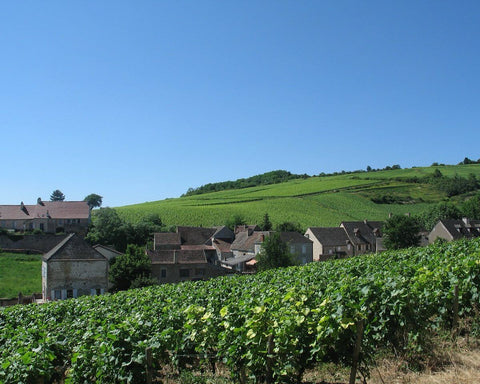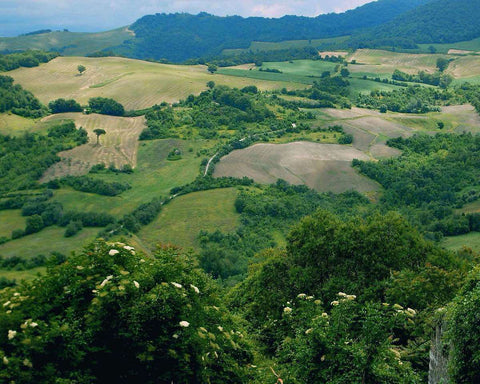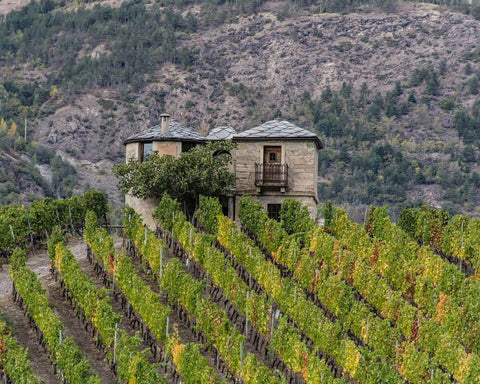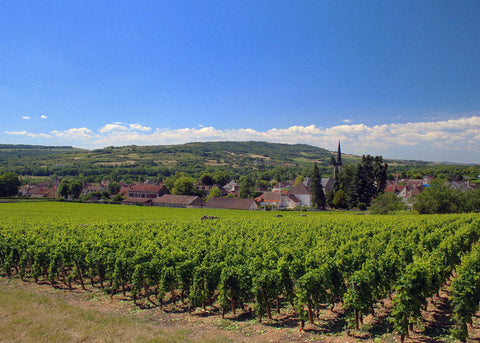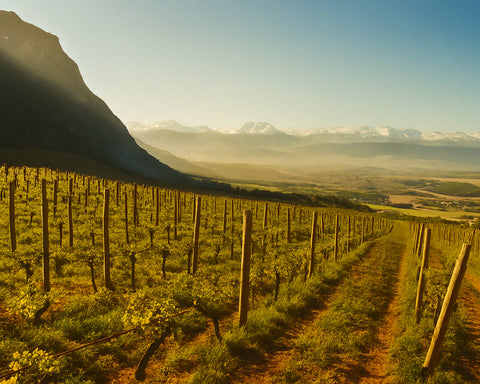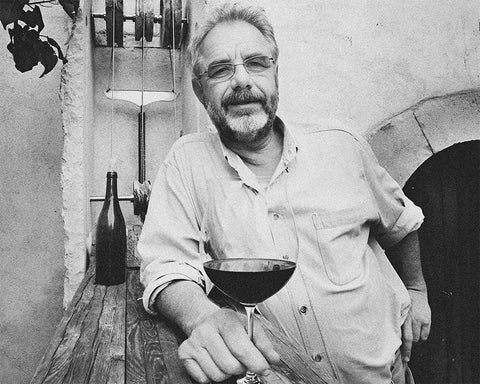Burgundy, situated in eastern France, is celebrated for its rich history, diverse cultures, picturesque landscapes, and stunning wines. Bordered by the regions of Champagne and Franche-Comté, Burgundy is renowned for its unique blend of natural beauty, architectural wonders, and culinary delights, making it one of France's most captivating and storied regions.
The region's wines, influenced by its varied terroir and climate, are celebrated for their distinctiveness and quality, reflecting Burgundy's enduring dedication to viticulture and oenological excellence. Burgundy is a benchmark for winemaking; it is where many top winemakers spent formative years and where some of the top wines are produced.
Table of Contents
History of Burgundy
Burgundy, strategically positioned in the heart of France, has been a region of significant historical importance. Its history is a rich tapestry woven from the influences of ancient Celtic tribes, Romans, Dukes, and the French monarchy, each leaving an indelible mark on the region's culture and traditions.
The region's Roman period began in the 1st century BCE, marking the start of Burgundy's rich cultural heritage. The Romans established vineyards and introduced viticulture to the area, a legacy that continues to flourish today. Roman cities such as Autun and Dijon became important centers of trade and culture.
Following the fall of the Roman Empire, Burgundy underwent various transformations. In the medieval period, the region rose to prominence under the rule of the Dukes of Burgundy, who played a pivotal role in European politics. The Duchy of Burgundy was a powerful and influential state known for its patronage of the arts and rich court culture.
In the 15th century, Burgundy became a part of the French kingdom, but its distinct cultural and political identity continued to shape its development. The region's monasteries, particularly the Cistercian Abbey of Cîteaux, were instrumental in advancing viticulture, developing many winemaking techniques still used today.
The French Revolution significantly changed Burgundy, redistributing lands and altering the political landscape. However, the region's commitment to wine production remained steadfast, and the 19th century saw a revival and modernization of its vineyards.
The 20th century brought challenges and advancements to Burgundy. The region faced economic hardships during the World Wars, but its resilient spirit and cultural richness helped it navigate these difficulties. The post-World War II period saw significant development in infrastructure, tourism, and the wine industry, establishing Burgundy as a prominent player on the global stage.
Terroir of Burgundy
Burgundy's terroir is as diverse as its history, characterized by various microclimates, soil types, and elevations. The region's varied landscape, from the Côte d'Or's rolling hills to the Saône River's plains, is crucial in shaping its unique viticultural landscape.
The region enjoys a continental climate with hot summers and cold winters. This climate, combined with the influence of the hills and the river, creates ideal conditions for grape cultivation. The plains and valleys benefit from fertile alluvial soils, while the hilly areas offer well-drained soils with a mix of clay, sand, and limestone.
The Geology of Burgundy
Burgundy's geology is marked by its diverse soil types, providing a fertile ground for vines to thrive.
- Côte de Nuits: Known for its limestone soils, which provide excellent drainage and mineral content, essential for growing high-quality Pinot Noir grapes. The region is famed for its red wines.
- Côte de Beaune: The soils here are a mix of limestone and marl, ideal for both Pinot Noir and Chardonnay. This area produces some of Burgundy's most renowned white wines.
- Chablis: Characterized by Kimmeridgian clay and limestone, Chablis offers unique conditions for producing distinctive Chardonnay wines with high acidity and minerality.
The diverse terroir of Burgundy allows for the cultivation of a wide range of grape varieties, each expressing the unique characteristics of its growing region.
Climate and its Influence
Burgundy's climate is predominantly continental, characterized by hot summers, cold winters, and moderate rainfall. The region's varied topography and proximity to the hills and the river create numerous microclimates, each contributing to the distinctiveness of the region's wines.
The Grapes of Burgundy
Burgundy is home to several indigenous grape varieties, each adapted to the region's unique terroir. The most notable are Pinot Noir and Chardonnay.
White Grape Varietals
- Chardonnay: The flagship white grape of Burgundy, known for its mineral notes and crisp acidity.
- Aligoté: Known for its bright acidity and citrus flavors, producing fresh and aromatic wines.
- Sauvignon Blanc: Offers floral and spicy notes, creating complex and aromatic wines.
- Pinot Blanc: Used to produce both still and sparkling wines with a delicate flavor profile.
Red Grape Varietals
- Pinot Noir: The flagship red grape of Burgundy, known for producing wine of great finesse, structure, complexity, and earthy flavors.
- Gamay: Known for its fruity notes and vibrant acidity, producing elegant and approachable wines.
Top Wines of Burgundy
Chardonnay: The quintessential white wine of Burgundy, Chardonnay is celebrated for its crisp acidity, mineral notes, and excellent aging potential. It is a versatile wine that pairs well with a variety of dishes.
Pinot Noir: Known for its acidity, structure, and expressive flavors, Pinot Noir wines are fresh and aromatic, reflecting the region's unique terroir.
Aligoté: A notable white wine of Burgundy, Aligoté is valued for its crisp acidity and citrus flavors. It is a versatile wine that pairs well with seafood and light dishes.
Other Notable Wines: Burgundy also produces a range of other exceptional wines, including Crémant de Bourgogne, known for its sparkling qualities, and Gamay, a red wine with peppery and spicy notes.
Cuisine and Typical Products of Burgundy
Burgundy's cuisine reflects the region's diverse cultural influences and abundant natural resources. The cuisine is renowned for its bold flavors, fresh ingredients, and innovative use of meats, cheeses, and seafood, making it one of France's most distinctive regional cuisines.
Seafood plays a central role in Burgundy's cooking, with dishes like "Escargots de Bourgogne," preparing snails with garlic and parsley butter, exemplifying the region's culinary creativity. The fertile land also yields various fruits, vegetables, and grains, integral to many traditional dishes.
Among the region's most prized products are its meats, particularly Charolais beef, and cheeses, such as Époisses. These ingredients are used in various dishes, from savory to sweet, showcasing the versatility and richness of Burgundy's produce.
Burgundy Antipasti
In Burgundy, a meal often begins with a selection of antipasti, highlighting the region's diverse flavors. A typical antipasti spread might include:
- Escargots de Bourgogne: Snails cooked with garlic, parsley, and butter.
- Gougères: Cheese puffs made with Gruyère cheese.
- Jambon Persillé: Ham terrine with parsley and garlic.
- Oeufs en Meurette: Poached eggs in red wine sauce.
Burgundy First Courses
The first course in a Burgundy meal often features hearty soups and stews, showcasing the region's meats and vegetables.
- Soupe à l'Oignon: A traditional French onion soup with a rich broth and melted cheese.
- Pot-au-Feu: A classic French beef stew with vegetables.
- Coq au Vin: Chicken braised in red wine with mushrooms and onions.
- Bouef Bourguignon: A beef stew cooked in red wine with carrots, onions, and mushrooms.
Burgundy Second Courses
Burgundy's second courses often highlight the region's abundant seafood and high-quality meats.
- Filet de Boeuf Charolais: A tender beef fillet from Charolais cattle, often served with a rich sauce.
- Bresse Chicken: A renowned breed of chicken known for its flavor, often roasted or prepared in a creamy sauce.
- Lapin à la Moutarde: Rabbit cooked with mustard sauce.
- Saumon à l'Oseille: Salmon with sorrel sauce.
Burgundy Side Dishes
Burgundy cuisine celebrates vegetables, with many side dishes highlighting the region's produce.
- Gratin Dauphinois: A creamy potato gratin with garlic and cheese.
- Haricots Verts: Green beans sautéed with garlic and butter.
- Ratatouille: A vegetable stew with eggplant, zucchini, and tomatoes.
Burgundy Cheeses
Burgundy produces a variety of cheeses, reflecting the region's agricultural diversity.
- Époisses: A soft cheese with a strong aroma and rich flavor, often enjoyed with bread or used in cooking.
- Brillat-Savarin: A triple-cream cheese known for its creamy texture and delicate flavor.
- Chaource: A soft cheese with a mild, slightly tangy taste.
- Delice de Pommard: A soft cheese rolled in mustard seeds, giving it a unique flavor.
Burgundy Dessert
Burgundy desserts often feature fruits, nuts, and local wines, creating a range of sweet treats.
- Pain d'Épices: A spiced bread made with honey and spices.
- Tarte Tatin: An upside-down apple tart with caramelized apples.
- Crème de Cassis: A blackcurrant liqueur often used in desserts or enjoyed as a digestif.
- Gougère au Sucre: A sweet version of the traditional cheese puff filled with pastry cream.
Typical Products of Burgundy
Burgundy's cuisine is grounded in high-quality local products, many of which have achieved protected status, ensuring their authenticity and traditional production methods.
Charolais Beef
Charolais beef is celebrated for its tender texture and rich flavor. This beef comes from carefully raised Charolais cattle and symbolizes the region's culinary excellence.
Époisses
Époisses, a soft cheese made from cow's milk, is known for its strong aroma and rich flavor. Aged for several weeks, it can be enjoyed on its own or used in various dishes, each offering a unique taste experience.
Mustard of Dijon
Traditional mustard of Dijon is made from brown mustard seeds and white wine or wine vinegar. Its complex flavor is prized in both savory and sweet dishes.
Crème de Cassis
Crème de Cassis is a blackcurrant liqueur made from locally grown berries. Its rich, fruity flavor makes it a perfect pairing for desserts and cocktails.
More on Burgundy's History
- Ancient Foundations
- Roman and Medieval Periods
- Renaissance Flourish
- Modern Unification
- Burgundy Today
Ancient Foundations
Burgundy's history dates back to ancient times, with evidence of human settlements from the Upper Paleolithic period. The region's strategic position attracted ancient peoples, including the Celts and Romans, who significantly influenced its culture and development.
Roman and Medieval Periods
The Roman period, starting in the 1st century BCE, saw Burgundy become a center of Roman civilization, with important cities like Autun and Dijon flourishing. The medieval period brought the rise of powerful duchies and communes, contributing to the region's cultural and intellectual life.
Renaissance Flourish
The Renaissance marked a period of artistic and cultural flourishing for Burgundy. The region saw the patronage of artists and scholars, leaving a rich legacy of Renaissance art and architecture. The University of Dijon, although established later, influenced the intellectual climate significantly.
Modern Unification
In the 15th century, Burgundy was integrated into the French kingdom, followed by significant modernization and economic development in subsequent centuries. Advancements in infrastructure, industry, and agriculture marked this period.
Burgundy Today
Today, Burgundy is a vibrant region known for its rich history, diverse culture, and stunning landscapes. Its economy is bolstered by agriculture, industry, tourism, and a growing technology sector. Burgundy continues to cherish its historical sites, unique cuisine, and a blend of cultural influences, making it a fascinating microcosm of French history.
